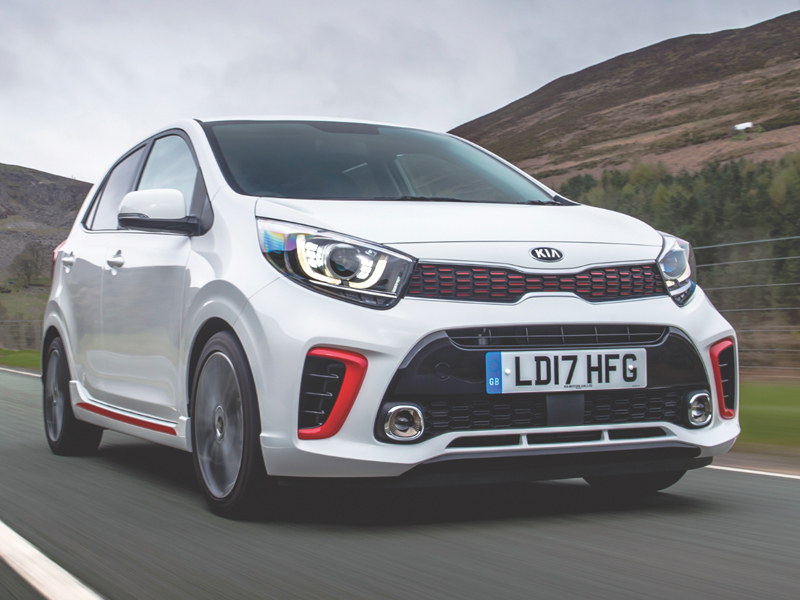Road Test: Kia Picanto
Kia’s third-generation city car has its sights set on the Volkswagen Up, explains Alex Grant.
Behind the technological strides at the top end of the market, the once-basic city car is evolving rapidly. A segment which poses the challenges of offering comfort, refinement, space and technology within a compact, cost-effective and economical package.
The Picanto, which in its first generation was a hint of changes to come at Kia, is now out to benchmark the best in its segment. Since the outgoing car launched in 2011, the Volkswagen Group has shown that city cars can feel as substantial as models in the class above; Kia is out to show it can achieve the same.
So, while its footprint hasn’t changed between generations, and neither has the side profile, there’s plenty to talk about under the skin. Its structure is stiffer and lighter, the steering and suspension geometry altered to give a more sure-footed and responsive drive, and Kia has better insulated the cabin from engine and road noise. They’re minor changes which add up; the Picanto can still dart around in city traffic, but it doesn’t feel overly sensitive and noisy at higher speeds.
Like the new Rio, it’s a single-bodystyle model range. Kia says demand for the three-door version was too low to justify the tooling costs to build it. UK customers will be offered the familiar three-trim line-up, with volume weighted towards the mid-spec ‘2’ version which includes air conditioning, four electric windows and Bluetooth among its standard equipment.
The significant additions are two GT-Line versions, as offered on other Kia products. GT-Line is based on the ‘2’ trim, adding a sports bodykit, bigger alloy wheels and twin exhaust tailpipes and expected to account for a third of UK sales, while GT-Line S is the range-topping model, based on the ‘3’ version. The Picanto 3 and GT-Line S are the only versions to get TomTom satellite navigation and the 7.0-inch touchscreen with Apple CarPlay and Android Auto, as well as a faux leather interior.
Depending on trim level, there are three engine and transmission options; a 67bhp 1.0-litre three-cylinder, and an 84bhp 1.25-litre four-cylinder with either a manual or automatic gearbox. It’s the former that offers the sparkier performance, particularly suited to town driving, the latter needing to be worked harder despite its higher power output. Kia also won’t offer the bigger engine with a stop-start system in the UK, as the cost is outweighed by the low annual mileage in this segment, and lack of tax advantages for doing so.
It’s the only big car norm that the Picanto does without. Within its compact dimensions, the square back end offers a respectable boot for this size of car, and room for adults in the back. There’s a removable load floor, which is level with the rear bench when it’s folded, and the dashboard is intuitively laid out and accented in silver, if a little lacking in soft-touch plastics – as per the segment norm. In a class that’s become increasingly sophisticated, Kia has a very competitive offer here.What we think
The cute Picanto looks, drives and feels more grown up than ever. It’s a retail-weighted product, but GT-Line versions should add to its user-chooser appeal.














